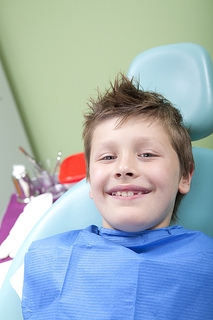More Than Just a Beautiful Smile: Why Orthodontics Is Important
June 5th, 2025

When most people think of orthodontics, they imagine straight teeth and picture-perfect smiles. While cosmetic improvement is one of the most visible benefits, the importance of orthodontic care goes far deeper. Orthodontics is a branch of dentistry that focuses on diagnosing, preventing, and correcting misaligned teeth and jaws — and it plays a vital role in your overall oral and systemic health. Dr. Hadgis completes a thorough analysis of the teeth and bone using advanced systems of 3D digital cone beam x-rays, 3D digital impressions and computerized treatment planning. Using the 3D images he can center the roots of the teeth in the bone and lock in the bite to create not only a beautifully aligned smile but one that is healthy and addresses the unique needs of each of our patients.
1. Improved Oral Health
Crooked or crowded teeth are harder to clean properly, making it easier for plaque and bacteria to accumulate. This can lead to tooth decay, gum disease, and even tooth loss over time. By aligning the teeth, orthodontic treatment makes brushing and flossing more effective, reducing the risk of long-term dental issues.
2. Better Bite Function
Misaligned teeth or jaws can cause a bad bite (malocclusion), which may lead to problems with chewing and speaking. An improper bite can also place stress on the jaw joints and muscles, resulting in pain or conditions such as temporomandibular joint (TMJ) disorders. Orthodontics helps correct bite issues, making everyday functions like eating and speaking more comfortable and efficient.
3. Prevention of Future Dental Problems
Early orthodontic treatment, especially for children and teens, can help guide jaw growth and prevent more serious dental issues in the future. By addressing problems early, it’s possible to avoid tooth extractions, surgeries, or more complex treatments later in life.
4. Boost in Self-Confidence
A confident smile can impact every part of life — from social interactions to job interviews. Many people who undergo orthodontic treatment report increased self-esteem and a better self-image once they feel proud of their smile.
5. Long-Term Cost Savings
Correcting dental problems through orthodontics can help prevent costly procedures down the line. Issues like tooth wear, cavities, gum disease, and jaw pain may require extensive treatment if left unchecked. Investing in orthodontic care now can lead to fewer problems and lower expenses in the future.
6. Improved Speech
Certain orthodontic problems, such as gaps or misaligned teeth, can interfere with proper pronunciation. Aligning the teeth and jaws can improve speech clarity and eliminate speech impediments caused by dental issues.
Final Thoughts
Orthodontics is not just about looking good — it's about feeling good, functioning better, and living a healthier life. Whether you’re a parent considering treatment for your child or an adult exploring orthodontic options, now is an excellent time to schedule an initial consultation with Dr. Hadgis to better understand how straightening your teeth could improve your health and smile. No referral is necessary, and the initial consultation is complimentary!
A straight smile may be the most noticeable outcome, but the hidden benefits of orthodontic care can last a lifetime.



